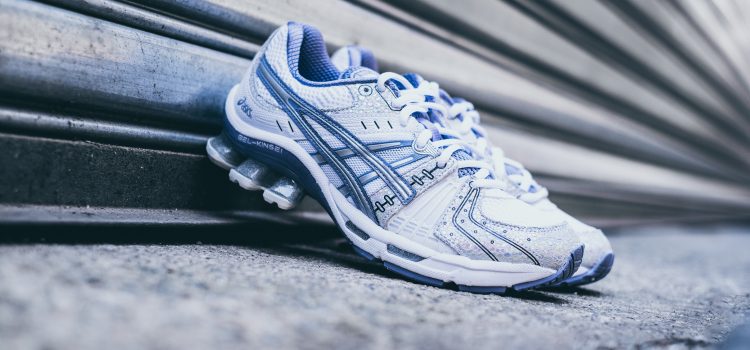
Are you tired of feeling overwhelmed when it comes to buying running shoes? With so many different brands, styles, and features on the market, it can be difficult to know where to start. But fear not! Our ultimate guide is here to help you navigate the world of running shoes with ease. Whether you’re a seasoned runner or just starting out, we’ve got everything you need to know about essential and non-essential shoe features explained in plain language. So lace up your sneakers and get ready for a comfortable and enjoyable run!
What to Look for in Running Shoes
When it comes to buying running shoes, there are a few essential features that you should be aware of. First and foremost, make sure that the shoes fit properly. Running shoes come in different widths and lengths, so it is important to make sure that the size you choose fits snugly on your feet. Second, consider the type of cushioning your running shoes offer. Some runners prefer a softer cushioning option while other prefer a more firm feel. Third, consider the material composition of your running shoes. Running shoe materials can vary widely, from natural materials like leather to synthetic materials like rubber. Fourth, be sure to check out the durability of your shoes before making a purchase. Some running shoes may not last as long as others due to their construction or material composition. Finally, consider the price range that you are comfortable spending on running shoes. Not all high-quality running shoes are expensive, so it is important to find a pair that fits your budget
Types of Running Shoes
When it comes to buying running shoes, there are a few things to keep in mind. First, what type of runner are you? Are you a beginner looking for an easy transition into running? Or are you an experienced runner who wants the best performance possible? Once you know your running style, you can start selecting the right type of shoe for you.
There are three main types of runners: Trail runners, road runners, and those who do a mix of both.
Trail Running Shoes: For trail running, there are specific shoes designed to absorb the impact and friction of traversing difficult terrain. They typically feature high cushioning and lightweight materials that make them comfortable even on long runs.
Road Running Shoes: Road running shoes are designed for fast, flat surfaces like roads or sidewalks. They have stiffer materials that help dissipate shock from impacts and give you better traction when running on pavement. They also tend to be more minimalist in design, which makes them easier to take on and off than trail shoes.
Mixed-Mode Running Shoes: Some runners switch between different types of shoes depending on their environment or activity. For example, if you’re going out for a run on trails but want to hit the road for some speed workouts later that day, mixed-mode shoes will work well. They have features from both types of shoes so they provide the best performance for both types of activity.
The Different Parts of a Running Shoe
The Different Parts of a Running Shoe
Shoe anatomy can be broken down into four main categories: the Upper, Midsole, Sole, and Heel. Let’s take a closer look at each one.
Upper
The upper is the part of the shoe that sits on top of your foot. It can be made from different materials, including leather, synthetic, or mesh. The type of upper you choose is important because it will affect how your shoes feel and fit and how well they protect your feet. For example, leather uppers are often more comfortable and durable than synthetic uppers, but they may not be as breathable. Midsole
The midsole is the layer between the upper and Sole. It’s responsible for providing cushioning and shock absorption while you’re running. Midsole materials can vary greatly depending on the type of shoe you buy; some are made from foam, others from rubber or plastic. Sole
The sole is the bottom part of the shoe that touches the ground when you’re running. It usually consists of two layers: a harder material on top and a softer material below. The softer material helps to absorb shocks while you run; this is why runners often say that good shoes feel “stable” when they stride. Heel
The heel is the point at which your shoe meets your ankle bone (see diagram below). Heels can come in many different shapes and sizes,
Buying Running Shoes Online
Running shoes come in a variety of shapes and sizes, so it can be hard to know what features are essential and which ones are non-essential. Here, we’ve outlined the key features to look for when buying running shoes online.
Essential Features:
-Arch support: Running shoes that don’t have arch support will cause discomfort over time. Look for shoes with a firm foam or gel insert to help provide support.
-Breathability: Wearing a sweaty shoe will not only make you feel uncomfortable, but it will also increase your risk of getting sick. Look for running shoes that have mesh or fabric panels that allow air to circulate freely.
-Cushioning: Running on hard surfaces can be jarring and cause pain in the feet and legs. Shoes with good cushioning will absorb shocks and reduce the impact on the feet and legs.
Non-Essential Features:
-Width: Some people prefer narrower shoes while others prefer wider shoes. There is no right or wrong answer here, as long as the width is comfortable.
-Heel height: Some people like high heels while others do not. Again, there is no wrong answer here as long as the heel height is comfortable for you.
-Traction: Traction is not necessary for most runners, but some people find it helpful in avoiding slips and falls. Look for running shoes that do not have excessive amounts of grip on the soles
How to Care for Your Running Shoes
Running shoes are a necessary part of any runner’s gear, but they don’t last forever. Here are some tips on how to care for your running shoes so they last as long as possible:
1. Wash your running shoes regularly – Place them in the washing machine on a gentle cycle with soap and water. Make sure to remove all the debris, including laces and fabric lining. Allow the shoes to air dry afterwards.
2. Use a shoe cream – Apply a shoe cream, such as FitFlop’s Mojo Lite, after each run to keep the leather from drying out and cracking. This will also help prevent blisters andFoot Powder idesasies idesas idesas .
3. Store your running shoes properly – Keep your running shoes in a cool, dark place away from direct sunlight and moisture (like rain or humidity). Exposure to these elements can damage the leather over time.
Conclusion
For runners of all levels,buying the right running shoes can be a daunting task. In this article, we have outlined the essential and nonessential features of running shoes to help you make an informed purchase. With these features in mind, it will be much easier for you to decide on what pair of running shoes will best suit your needs. So go ahead and take that first step into buying your new running shoes!










